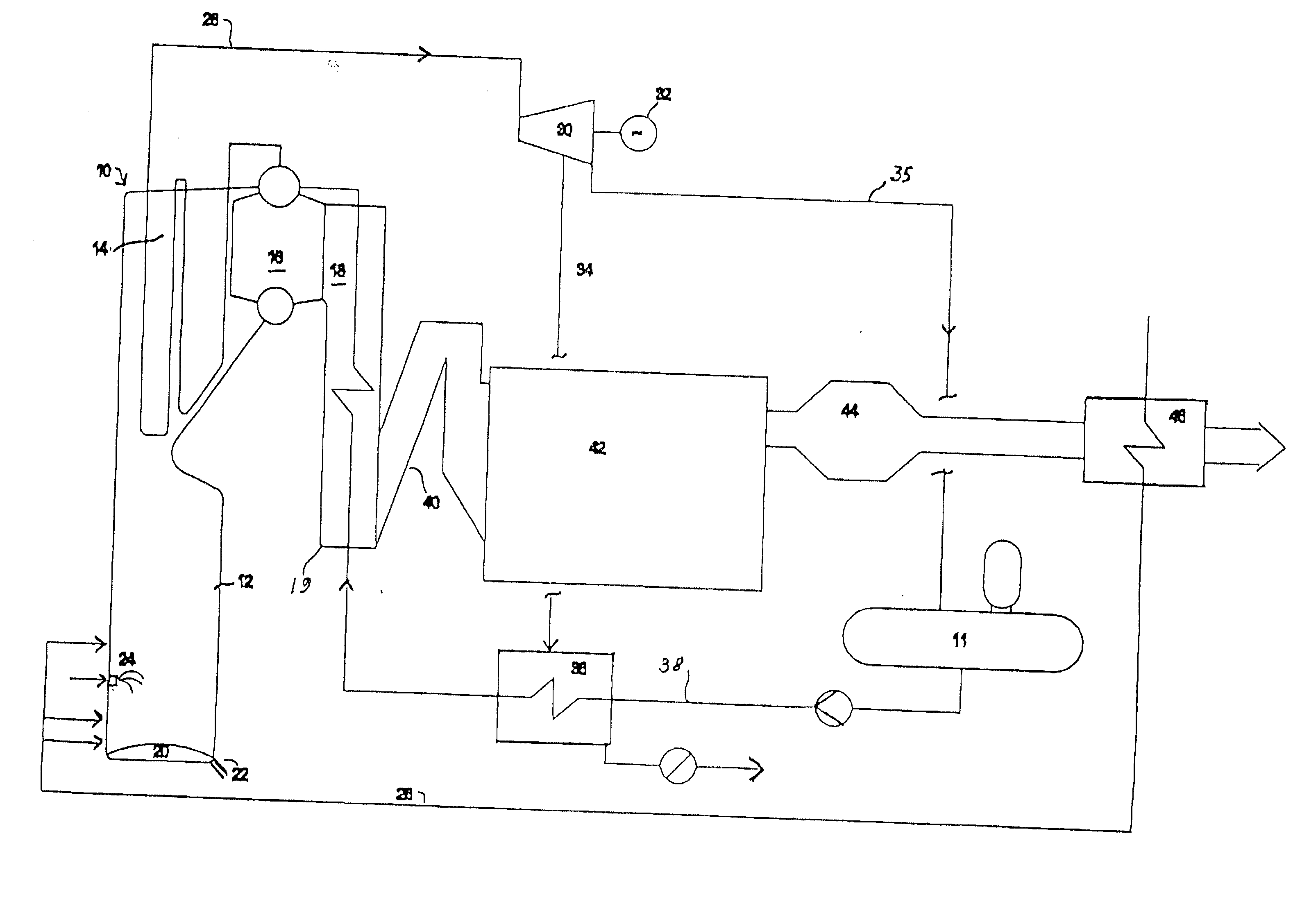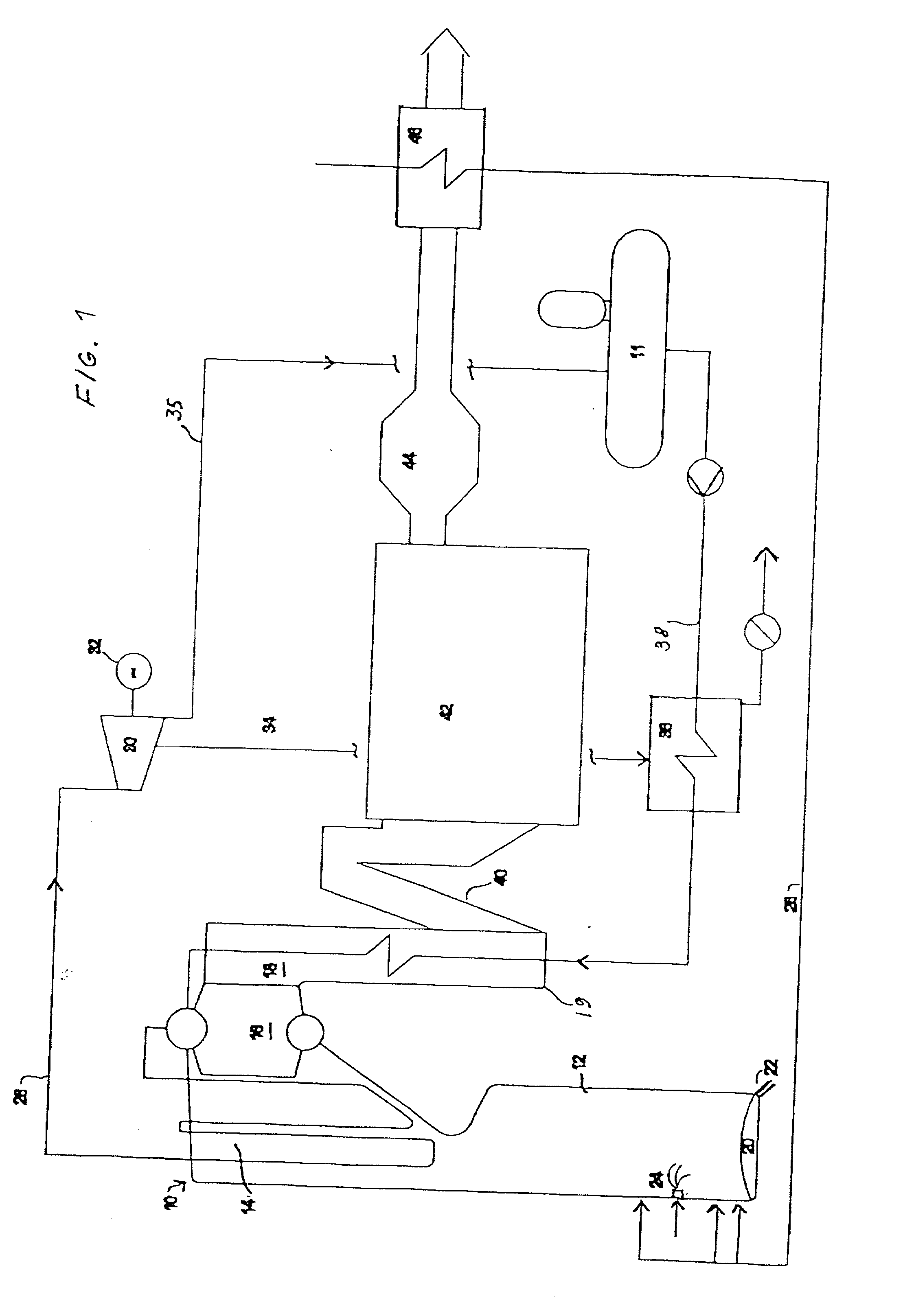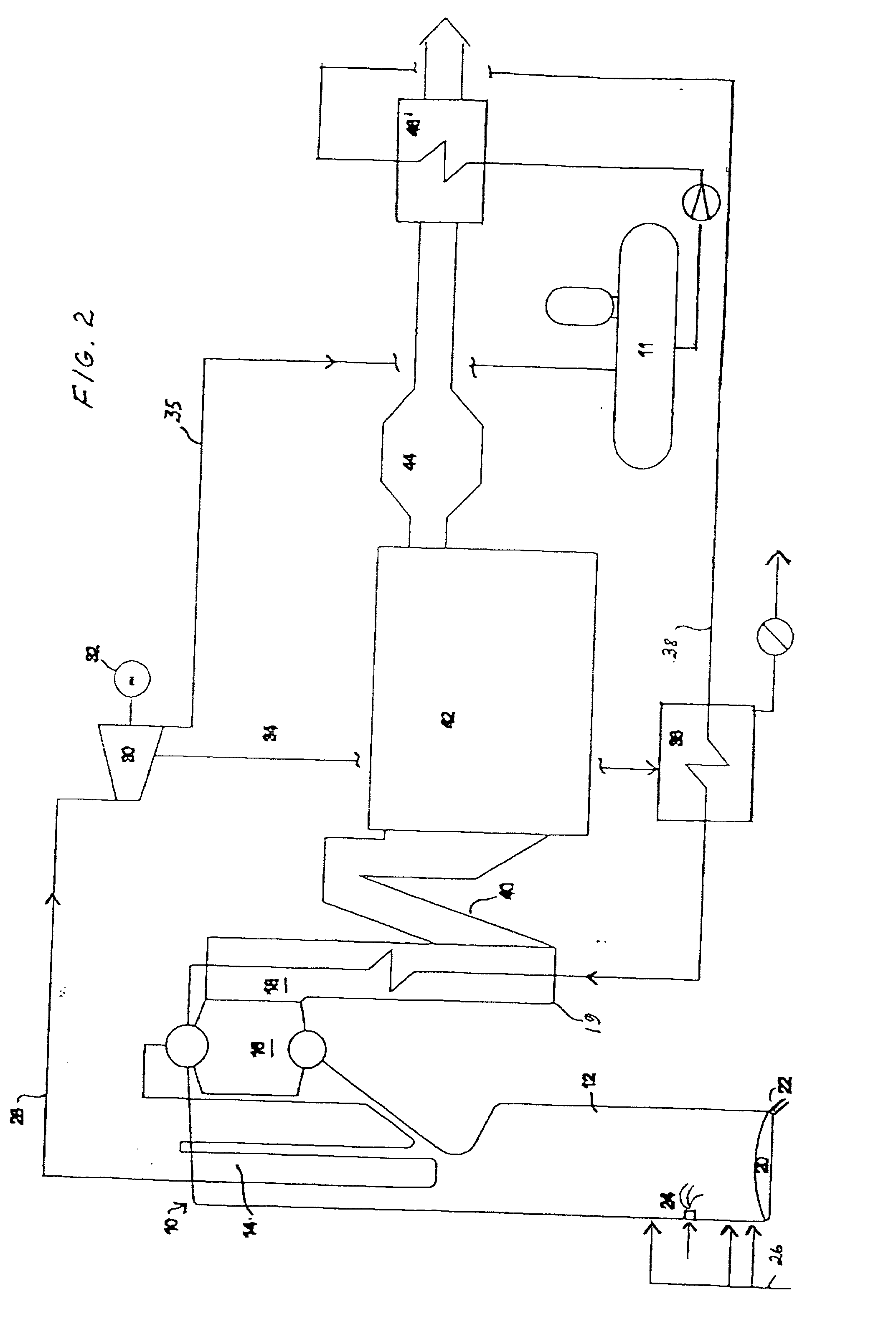Method and arrangement for producing electrical energy at a pulp mill
a pulp mill and electrical energy technology, applied in the field of methods, can solve the problems of low electricity yield and condensation solution efficiency, low efficiency of recovery boilers, and high temperature corrosion and clogging risks, and achieve the effects of preventing the preheating of combustion air with flue gases, reducing the risk of high-temperature corrosion and clogging, and increasing the efficiency of electricity production
- Summary
- Abstract
- Description
- Claims
- Application Information
AI Technical Summary
Benefits of technology
Problems solved by technology
Method used
Image
Examples
Embodiment Construction
[0023] FIG. 1 illustrates a recovery boiler 10 known per se which comprises a furnace 12 and heat recovery surfaces: a superheater 14, a steam-generating bank 16 and an economizer 18. The economizer can comprise one or more economizers. Black liquor is introduced into the boiler via nozzles 24. Prior to the boiler, the black liquor has been concentrated in the evaporation plant to a dry solids content of more than 80 weight percent, typically about 80-95 weight percent of dry solids, preferably about 85-90 weight percent. A preferred method of reaching such a high dry solids content in black liquor evaporation is the method described in FI patent application 974345.
[0024] Preheated combustion air is also introduced into the furnace via line 26. The excess air ratio in the combustion is low, less than 2 volume percent, preferably 1-1.5 volume percent. During the combustion, chemicals contained in the black liquor form a char bed 20 at the bottom of the furnace, wherefrom the chemical...
PUM
| Property | Measurement | Unit |
|---|---|---|
| temperature | aaaaa | aaaaa |
| pressure | aaaaa | aaaaa |
| temperature | aaaaa | aaaaa |
Abstract
Description
Claims
Application Information
 Login to View More
Login to View More - R&D
- Intellectual Property
- Life Sciences
- Materials
- Tech Scout
- Unparalleled Data Quality
- Higher Quality Content
- 60% Fewer Hallucinations
Browse by: Latest US Patents, China's latest patents, Technical Efficacy Thesaurus, Application Domain, Technology Topic, Popular Technical Reports.
© 2025 PatSnap. All rights reserved.Legal|Privacy policy|Modern Slavery Act Transparency Statement|Sitemap|About US| Contact US: help@patsnap.com



